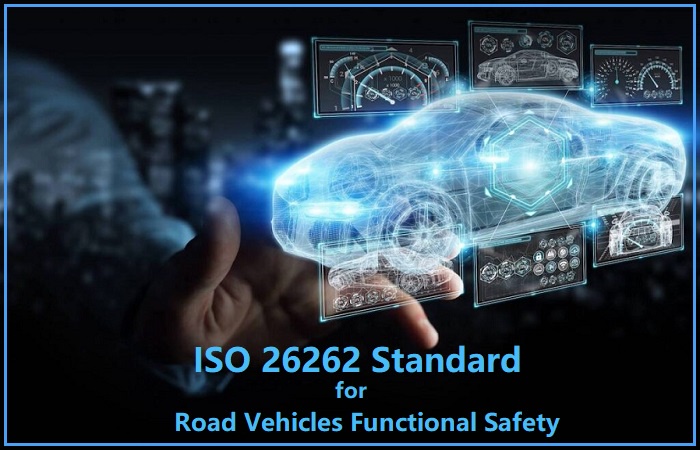The automotive business is always growing, with new technology and features being released regularly to improve the comfort, safety, and convenience of daily drivers. Functional safety management is an important component of risk assessment in the automotive sector since it helps to prevent hazards that could result in fatalities. All of these new technologies must be safe and adhere to high functional safety standards. This is where ISO 26262 enters the picture.
ISO 26262 standard is a functional safety standard for road vehicles. It establishes the functional safety requirements for electrical/electronic, software, or mechanical systems intended to be employed in a vehicle to prevent threats to people's lives. Every company that desires to supply electrical/electronic, software, or mechanical systems for use in a vehicle must be ISO 26262 compliant. Companies must demonstrate that their products fulfill the required safety standard for each application to obtain ISO 26262 certification.
By obtaining an ISO 26262 certification, businesses can better their products' quality and dependability, lower the chance of dangerous scenarios as a result of system failures, and even safeguard their reputation and financial health. So how to attain ISO 26262 compliance is the real issue. Each component of the system must be examined using functional safety principles to guarantee compliance with ISO 26262. The approach applies to both goods and the delivery framework, upon which the product was built. Thus, the entire safety engineering process must be validated for safety-related systems. The ISO 26262 standard is broken down into twelve components, each of which refers to a particular stage of the product lifecycle:
- Vocabulary: To preserve continuity and avoid misunderstandings, this section defines frequently used terms and acronyms.
- Management of Functional Safety: This section describes the functional safety management methodology that applies to automotive applications. It comprises information about general safety management as well as project-specific information about management activities at various stages of the safety lifecycle.
- Concept Phase: This component is used throughout the early stages of product development. Based on Item Definition, a Hazard and Risk Assessment (HARA) is required. It also entails creating Functional Safety Requirements, which are subsequently communicated to the System Team. The project's Safety Objectives should be defined from this point on.
- Product Development at The System Level: This section addresses system-level development challenges. It describes technical safety specifications that must be initiated, such as the technical safety concept, system architectural design, item integration, and testing.
- Product Development at The Hardware Level: This section covers fundamental topics like hardware design and the evaluation of architectural hardware metrics. It is also needed under this clause to examine safety objective violations caused by random failures.
- Product Development at The Software Level: This section provides software safety specifications, software architectural design specifications, software unit design and verification specifications, software integration specifications, and embedded software testing specifications. Qualitative analyses, such as Failure Tree Analysis (FTA) and Failure Mode and Effect Analysis (FMEA), are frequently used at this stage.
- Production, Operation, Service, Decommissioning: This section discusses how to create and maintain a manufacturing process for safety-related elements and objects designed for installation in road vehicles. It also offers information for users concerning operations, services, and decommissioning that interact with safety-related things.
- Supporting Processes: This part applies to all stages of the product's safety lifecycle. It discusses topics such as how to proceed correctly to verification, how to accomplish tool qualification, and how to introduce verified in-use arguments.
- Automotive Safety Integrity Level (Asil)-Oriented and Safety-Oriented Analyses: This part addresses ASIL decomposition, element coexistence criteria, dependent failure analysis, and safety analysis.
- Guidelines on ISO 26262: This part provides an overview of ISO 26262 which has been supplemented with supplementary material. The purpose is to better comprehend other parts of ISO 26262 in general. ISO 26262 awareness training may be effective in this case.
- Guidelines on Applying the Standard to Semiconductors: To assist semiconductor producers and silicon intellectual property, this Part offers thorough information (IP). Its objective is to discuss how IP vendors and integrators ought to collaborate.
- Adaptation of ISO 26262 To Motorcycles: An overview of the ISO 26262 standards' modification for bikes is provided in the final section. It covers safety validation, vehicle integration and testing, hazard analysis, and risk assessment, confirmation measures, and safety culture.


No comments yet